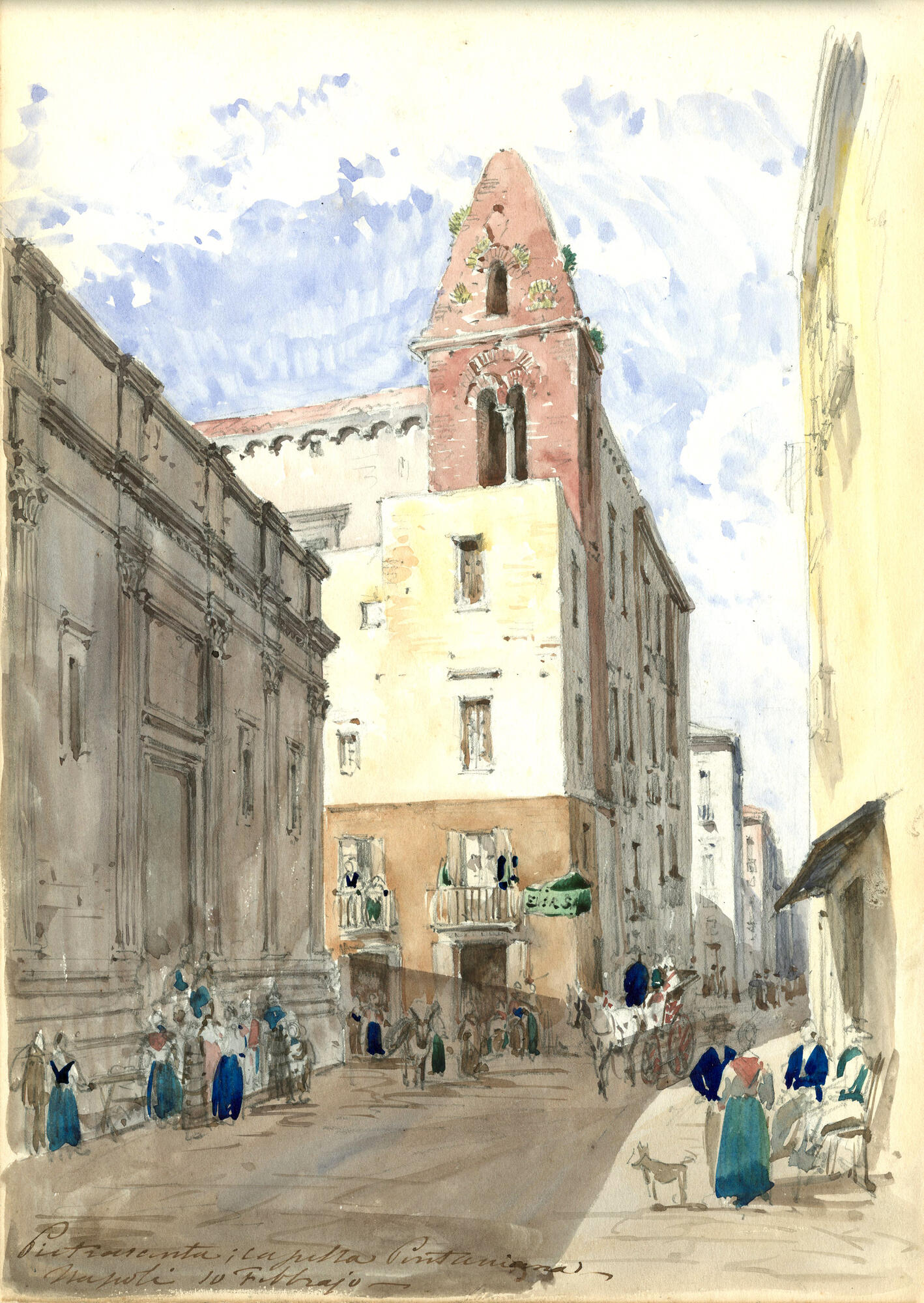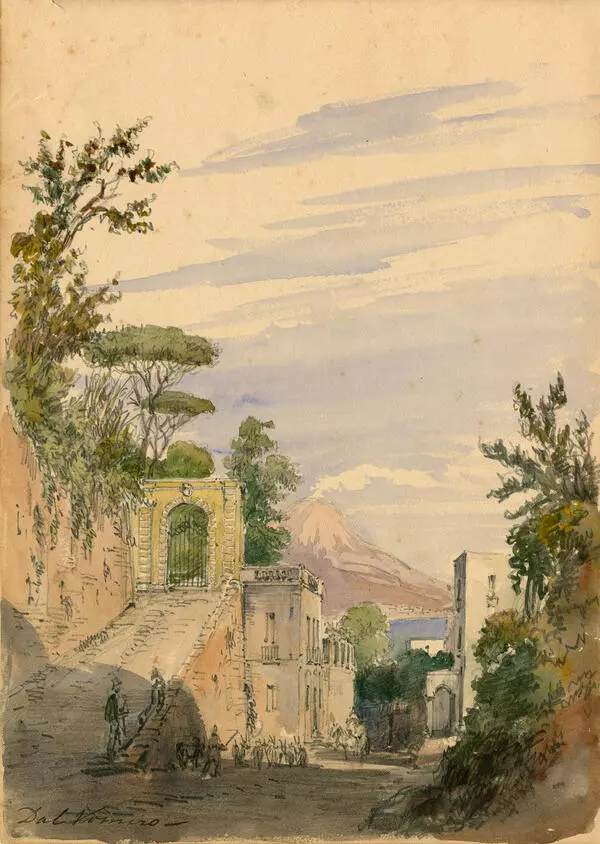Zhorzhina Chicherina came from the old Meyendorff family, was versatilely educated and endowed with aesthetic taste. The woman not only brought up in her children - Nicholas, Sophia and Georgy - a love of art, but also painted on her own.
Throughout her artistic career, the Baroness preferred white or colored paper, and also used pencils, charcoal and watercolors.
The archives of the house-museum contain 104 sheets, some of which have been preserved separately, but most of them are collected in 4 albums. Researchers attribute 2 of them to the ‘Italian’ period, when the artist explored the peninsula. In the paintings one can recognize landscapes and architecture in large cities. For example, in Florence, Sorrento or Pisa.
The traveler painted that work in the 1850s and indicated the specific day, month and place - February 10 in Naples.
Zhorzhina Chicherina depicted a cloudy day on a city street at the drawing. Along the buildings one can see the silhouettes of people in bright clothes, on the road - a pack donkey and a harnessed horse. In addition, there is a dog in the foreground. In the background, a chapel is clearly visible, slightly overgrown with plants.
Let me remind you that a chapel is a type of religious building that has an altar and is suitable for worship, but is part of a larger architectural object. Similar temples were common in the Catholic, Lutheran, and Anglican faiths.
It is worth noting that throughout her life, Zhorzhina Chicherina managed to visit not only Italy, but also France and Germany. First, she traveled to Europe with her parents, and then with Vasiliy Chicherin, her husband and diplomat.
According to experts, the main feature of the artist’s works is that even after many years the views can be found in reality thanks to vivid images and memorable details.
It is noteworthy that the collection of artifacts of the house-museum was often replenished by direct descendants of the Chicherin family. For example, in 1987 Natalya Chicherina, Zhorzhina’s great-granddaughter, handed over for permanent storage a French-language Bible that her great-grandmother used.
Throughout her artistic career, the Baroness preferred white or colored paper, and also used pencils, charcoal and watercolors.
The archives of the house-museum contain 104 sheets, some of which have been preserved separately, but most of them are collected in 4 albums. Researchers attribute 2 of them to the ‘Italian’ period, when the artist explored the peninsula. In the paintings one can recognize landscapes and architecture in large cities. For example, in Florence, Sorrento or Pisa.
The traveler painted that work in the 1850s and indicated the specific day, month and place - February 10 in Naples.
Zhorzhina Chicherina depicted a cloudy day on a city street at the drawing. Along the buildings one can see the silhouettes of people in bright clothes, on the road - a pack donkey and a harnessed horse. In addition, there is a dog in the foreground. In the background, a chapel is clearly visible, slightly overgrown with plants.
Let me remind you that a chapel is a type of religious building that has an altar and is suitable for worship, but is part of a larger architectural object. Similar temples were common in the Catholic, Lutheran, and Anglican faiths.
It is worth noting that throughout her life, Zhorzhina Chicherina managed to visit not only Italy, but also France and Germany. First, she traveled to Europe with her parents, and then with Vasiliy Chicherin, her husband and diplomat.
According to experts, the main feature of the artist’s works is that even after many years the views can be found in reality thanks to vivid images and memorable details.
It is noteworthy that the collection of artifacts of the house-museum was often replenished by direct descendants of the Chicherin family. For example, in 1987 Natalya Chicherina, Zhorzhina’s great-granddaughter, handed over for permanent storage a French-language Bible that her great-grandmother used.




